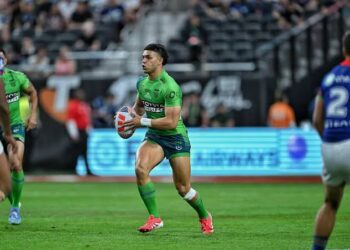John Bonham is undoubtedly one of the greatest rock drummers of all time, and you could perhaps make the argument that his abilities were able to transcend all genres, making him simply the greatest to ever sit behind the tubs full stop.
Sure, cases can be made for the likes of Buddy Rich or Keith Moon as having been more electrifying as a spectacle, but for all of their theatricality and virtuosity, Bonham’s ability to do the basics better than anyone else was a wonder to behold.
He may not have necessarily been the flashiest of all drummers, but some of his finest works didn’t need to be fancy or contain multiple complicated fills. When Led Zeppelin needed him most to bring out his best efforts, he was always reliably there to provide an impenetrable backbeat and groove and could do so in such an effortless fashion.
Rhythm was within Bonham as an innate skill that he clearly didn’t need to exert much effort or stress to produce, and that’s one of the main reasons so many other drummers in years since have been envious of his talents. There isn’t a single bad performance from ‘Bonzo’ throughout Led Zeppelin’s discography, which also means there are far too many tracks to choose from as being his greatest performance on any of their records. There are, of course, a number of candidates that repeatedly get brought up in contention for the title of ‘Best John Bonham Performance’, but picking a definitive best in some regard would be splitting hairs.
If you were to ask the man himself, he would have attested that his personal favourite to play live was the Physical Graffiti cut ‘Trampled Under Foot’, an especially funk-oriented track that fellow member John Paul Jones claimed was inspired by Stevie Wonder’s ‘Superstition’. It’s the sort of groove that all drummers get a kick out playing along with, as it is simply about finding a groove and losing yourself in it, and Bonham was no different in this regard, saying he especially liked it due to how “it’s just at the right pace, and you can do a lot of frills.”
The other obvious candidate would be the Led Zeppelin II track ‘Moby Dick’; a performance that always has the ability to floor other drummers. When asked to pick his favourite Bonham drum performances, Dave Grohl told Mojo about how impressive it was that Bonham would regularly perform the iconic solo with his bare hands, and while he didn’t vote it as being his all-time favourite he acknowledged its brilliance. However, with it being a drum solo, no matter how impressive it is, to really see his brilliance, you need to hear him accompanied by the rest of the band, as that really shows off his musicianship at the highest level.
With that in mind, the best example of Bonham at work is heard on Led Zeppelin IV’s closing track, ‘When The Levee Breaks’. It’s a masterful example of how he never needs to be complex in his drum patterns, and in essence, his contributions to the song are quite basic. However, the song sounds incomplete when you remove his thunderous beat, and the bombastic thuds of every hit echoes throughout the song.
To get that reverberating drum sound, the drum track was recorded in a stairwell with a microphone draped over a bannister, and the resulting beat that came from it has become one of the most iconic performances by any drummer. Having been sampled to death by other artists in the years since, it’s now as immediately recognisable as James Brown’s ‘Funky Drummer’ or the Winstons’ ‘Amen, Brother’ in terms of how many times you’ve heard the drum beat without needing to have heard the original song.
It may be simple, but that’s exactly what made his playing so special. To illustrate just how crucial his drumming was to the band, Led Zeppelin vocalist Robert Plant probably summed it up best: “John always felt his significance was minimal but if you take him off any of our tracks, it loses its potency and sex. I don’t think he really knew how important he was.”











Discussion about this post